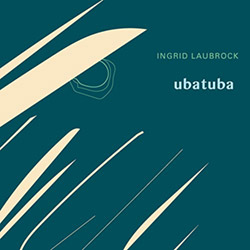
Ingrid Laubrock's personal journey from her native Germany to London in 1989 and on to New York City in 2008 has been accompanied by growing confidence and musical developments that have been fascinating to observe. Along the way, in London she progressed from playing Brazilian music with Monica Vasconcelos to more avant garde jazz with the F-IRE Collective and free improvisation alongside pianist Liam Noble and drummer Tom Rainey (who she would marry after her move to NYC.) In New York, she developed links with other prominent US musicians including guitarist Mary Halverson and Anthony Braxton (in whose quartet and Tri-Centric Orchestra she has played and recorded). She also began leading her own groups such as the sextet Anti-House and an octet, both of which include Rainey and Halverson. Now comes this new five-member grouping which combines two saxophones, trombone, tuba and drums.
It is a measure of Laubrock's status that none other than Tim Berne is the group's second saxophonist, a link no doubt helped by Rainey's long-standing associations with Berne. Alongside Laubrock, Rainey and Berne, the quintet is completed by Dan Peck (who has also worked with Braxton) on tuba, and trombonist Ben Gerstein. Rather than free improv, the album's six tracks — totalling fifty-six minutes — are all Laubrock compositions, of which she comments, "... I have always relied on the piano for composing. When conceiving this record, I decided to try a different approach and compose using either the saxophone or pencil and paper only." That approach must be judged a great success as the resulting music fizzes with life and displays the players to best effect, individually and collectively. The album title rightly shines the spotlight on the tuba. With no other bass instrument in the quintet, it holds the bottom line in a way that recalls Henry Threadgill's imaginative use of tuba in his ensembles.
Laubrock has clearly learnt by listening to the best. In her writing she sensibly avoids the conventional head-solos-reprise format, thus steering clear of the clichés and predictability it can bring. Instead, her writing is detailed but loose, and so avoids becoming a straitjacket for the players. It mixes in improvised passages that successfully blur the boundary between written and improvised music. That blurring owes as much to the musicians as to the writing itself, as they all exploit every opportunity to interact with one another, explore the music and breathe life into it. All five players get a chance to shine and the album would be poorer without any one of the five. Across the six tracks, there is great variety in their durations (from just over four minutes to just over sixteen), energy levels and moods; this ensures that the album is constantly surprising and never remotely dull. A delight from first note to last, it stands up very well to repeat listenings and seems likely to do so for years. More soon, please.
Comments and Feedback:
|



